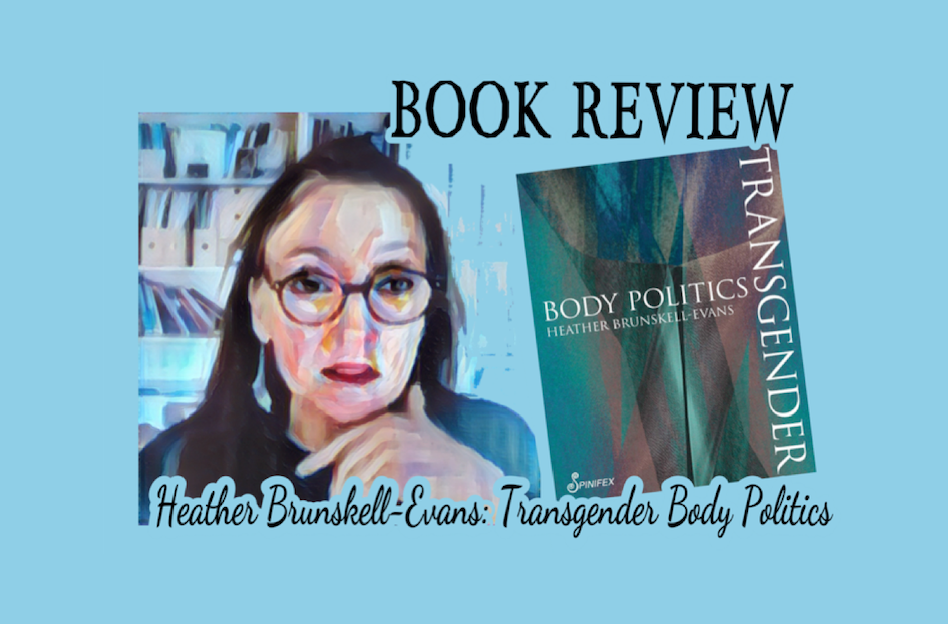
Heather Brunskell-Evans is an academic; a philosopher, co-founder of the Women’s Human Rights Campaign and co-author of the Declaration on Women’s Sex-based Rights. She has co-edited, with Michele Moore, the books Transgender Children – Born in Your Own Body and Inventing Transgender Children and Young People.
Her latest book ‘Transgender Body Politics’ was published by Spinifex press in October 2020- making my review somewhat tardy, but better late than never!
Don’t be fooled by the slightly-smaller-than-average 7″ x 5.5″ format: this little book is 163 pages of ‘exposure, argument and persuasion’ (excluding references and acknowledgements) offering explanations for and chronicling the political history of transgender politics in recent years. Unlike her first two books, which many choose to order from their local library, ‘Transgender Body Politics’ is a reasonably priced £12.71 on Amazon UK and just over six quid on Kindle.
The book is dedicated to her grandchildren, the wonderfully named Hugo, Hera and Octavia, “in the hopes that their healthy bodies can be kept whole and safe throughout their childhood, free from the tyranny of gender identity” and Heather fuses the personal with the practical on a whirlwind tour with a primary focus on the damage done to women and girls by the current trans ideology.
Some background
Heather has not only the welfare of little people to consider, she is no stranger to the harm that the current trans narrative can pose to female rights and the no-platforming that stalks women who speak out against the transitioning of children. A founder member of the Women’s Equality Party (WEP) she was a spokeswoman for their policy on Violence Against Women and Girls. In November 2017 she spoke on the Moral Maze, expressing her concern about the transitioning of children:
““A genuinely progressive society would allow boys and girls to be whatever they want to be, so I am absolutely perfectly happy if boys want to wear dresses…. but the problem comes when we decide that the child is genuinely internally and in some sense not a boy but a girl and that is where we get into trouble.”
For this, Brunskell-Evans was accused of transphobia, of being unfit to represent of the party and of fundamental disagreement with the ‘core values’ of the party. Heather was stripped of her role and resigned. You can read more on her website, here.
“The core value that a child’s biological sex could be socially constructed had not been made clear to me.” observed Heather, wryly.
.
Heather opens with the story of her transsexual friend Emily, who was a glamourpuss at parties yet happy to whip off his blonde wig and help move furniture when necessary. At the time this left Heather pondering ‘what is a man?’.
She moves on to her thoughts on the 2015 transition of Bruce Jenner.
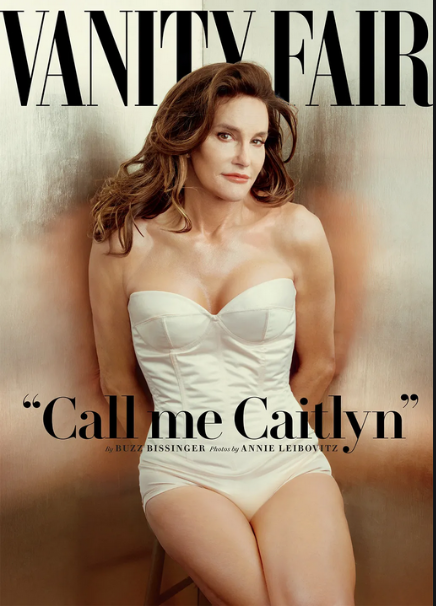 “In an Orwellian Twist, the artifice of gender (the constructions, fabrications and deceptions of Jenner’s airbrushed and silliconed body) had apparently transitioned him into a woman, but the empirical reality of his biological sex, including his fathering of children, was a fiction.”
“In an Orwellian Twist, the artifice of gender (the constructions, fabrications and deceptions of Jenner’s airbrushed and silliconed body) had apparently transitioned him into a woman, but the empirical reality of his biological sex, including his fathering of children, was a fiction.”
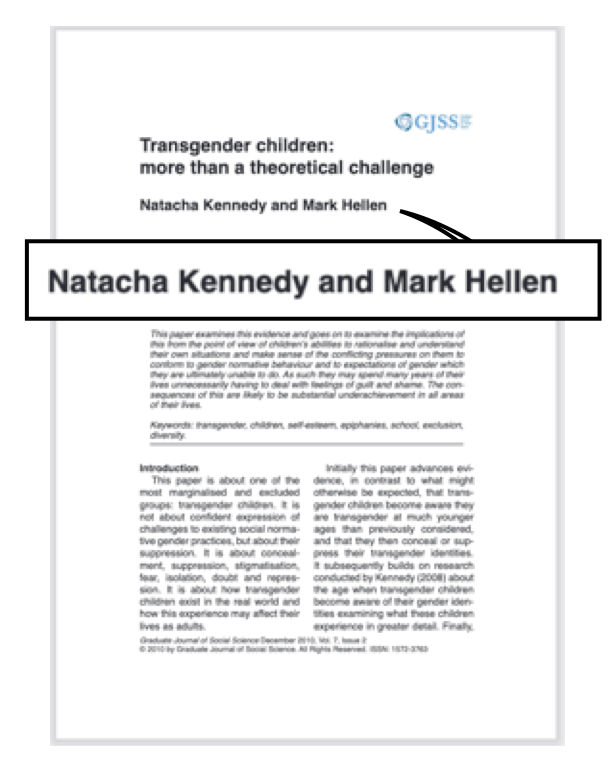
Some may remember Kennedy’s penchant for writing academic articles with himself
Brunskell-Evans wrote an article for University of Leicester’s Think Pieces about Jenner’s transition; it was removed when Natasha Kennedy (aka Mark Hellen) accused it of breaching the Equality Act for ‘misgendering’ Jenner.
Lawyers from the university’s legal team responded that the piece was neither discriminatory nor inflammatory and it was reinstated.
A colleague told her, “Don’t go down the transgender route, Heather. It’s a vortex. It will suck you in and you’ll never get out. It will be the end of your career.”

 In the first chapter, Brunskell-Evans discusses the difference between biological sex and gender, defining gender critical feminism as ‘sex-class based politics’. It is termed gender critical, she says,because “it requires us to bring a critical lens to gender”.
In the first chapter, Brunskell-Evans discusses the difference between biological sex and gender, defining gender critical feminism as ‘sex-class based politics’. It is termed gender critical, she says,because “it requires us to bring a critical lens to gender”.
She discusses the linguistic contortions of Butler’s ‘existentialist account of social construction’, queer theory, the concept of ‘women with penises’ and the breaking down of women into groups called ‘trans’ and ‘cis’.
Stonewall, which has become a powerful and influential organisation through it’s ‘Diversity Champions’ scheme, advocates for self-identification in law and describes anyone who doesn’t believe someone literally is the other sex as ‘transphobic’. Stonewall now defines lesbians as being ‘same gender attracted’.
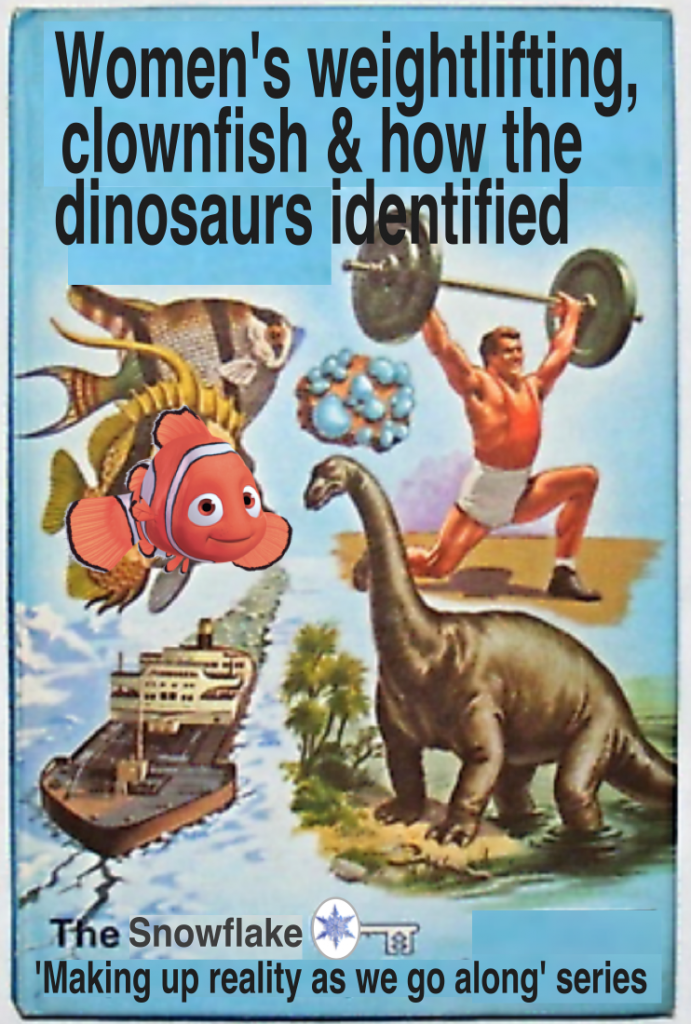 Heather expresses concern that all psychological associations are now coerced into supporting ideas like those asserted by James Barret, who uses plant and fish variations to ‘prove’ sexual reproduction has variations and that the true reality is gender identity. She discusses the 2017 Memorandum of Understanding on conversion therapy and the current idea that a man who thinks he is a woman must only ever be affirmed in his delusion (my words).
Heather expresses concern that all psychological associations are now coerced into supporting ideas like those asserted by James Barret, who uses plant and fish variations to ‘prove’ sexual reproduction has variations and that the true reality is gender identity. She discusses the 2017 Memorandum of Understanding on conversion therapy and the current idea that a man who thinks he is a woman must only ever be affirmed in his delusion (my words).
The section on intersectional feminism is especially interesting: a discussion on how feminism should ideally encompass race, class and age and be aware of how these facets interlock. She refers to Jane Clare Jones’ observation that the most striking thing about modern intersectional feminism is how un-intersectional it is. Academics who are gender critical, Heather observes, are frequently no-platformed.
Brunskell-Evans refutes transactivists claims that gender critical women are bio-essentialists and Sally Hines’ claims that gender critical feminists ‘police the boundaries of womanhood’. Lesbians are, in addition, accused of policing the lesbian community, and thus ‘transwomen lesbians’ – aka heterosexual men- become the most oppressed. Heather points out that intersectional does not mean inclusive: men cannot actually be part of the oppressed class because they’re part of the class carrying out the oppression.
Discussing women’s bodies and the binary nature of sex, Brunskell-Evans touches on the topic of pregnant men and the neutralisation of pregnancy through terms such as ‘chest feeding’ and ‘pregnant people’. It is women who are expected to make space for men in their spaces, she notes, transmen are, unsurprisingly, no threat to men’s autonomy or freedom. She notes, “the struggle against patriarchy must be led by those who own the means of reproduction: women.”
Of Posie Parker’s billboard, postcard and sticker slogan, the dictionary definition of ‘woman’, Brunskell-Evans observes, with some satisfaction:
“This simple statement drives transgender ideologues and their supporters to apoplexy”.

Chapter two discusses the increase in the transitioning of children, the concept of the ‘transboy’ and the idea that a girl should have the human right to be called a boy. It explores trans-affirmative psychotherapy and the concept that ‘a girl is a boy if she says she is’.
Brunskell-Evans refers to the case of Keira Bell, a young detransitioner who was prescribed puberty blockers after just three appointments, and examines the Gender Identity Development Service (GIDS) which is disconcertingly mandated to “recognise a wide diversity in sexual and gender identities (and) support young people to understand their gender identity” and the influence of organisations such as Mermaids and Gendered Intelligence.
A dozen years ago, most of the patients at GIDS were boys, now two thirds of patients are girls. GIDS are vague about the possible reasons behind this.
Discussing some of the woowoo psychobabble (my phrase) coming out of the mouths of those who work there, Brunskell-Evans observes that the ‘transboy’ must not be pathologised or helped to find the causes behind her masculine identity, but instead simply helped to reach a greater degree of self-acceptance of her social identity.
Many experienced clinical psychologists are not happy with this model, and many express concerns about Rapid Onset Gender Dysphoria (ROGD), but are forced to remain anonymous out of fear of accusations of transphobia or that they are supporters of ‘conversion therapy’.
This avoidance of addressing cause and effect to avoid a pathological diagnosis frequently results in the use of puberty blockers and cross-sex hormones. Brunskell-Evans expresses her concern for GIDS’ support of this path, despite the ‘severe physical dangers’, including risks to heart and bone health, fertility and sexual function, associated with these treatments. Such treatments are marketed as an ‘existential choice’. The predominant issue for GIDS, in the words of Bernadette Wren, is ‘social justice’ for the ‘gender diverse’.
Likewise, Jay Stewart of Gendered Intelligence states “Queer theory was the roadmap to my own self-understanding” and claims that acts of ‘self-choosing’, including surgery, can help girls to ‘transcend their female sex.”
Our highly sexualised culture, observes Brunskell-Evans “signifies to girls that to be female is to be an object of male desire and male entitlement”. This can be especially difficult for autistic girls, or girls afraid of leaving childhood behind, and for lesbian girls for whom“dawning same-sex attraction occurs against a backdrop of homophobia, as well as a dearth of everyday lesbian visibility.”
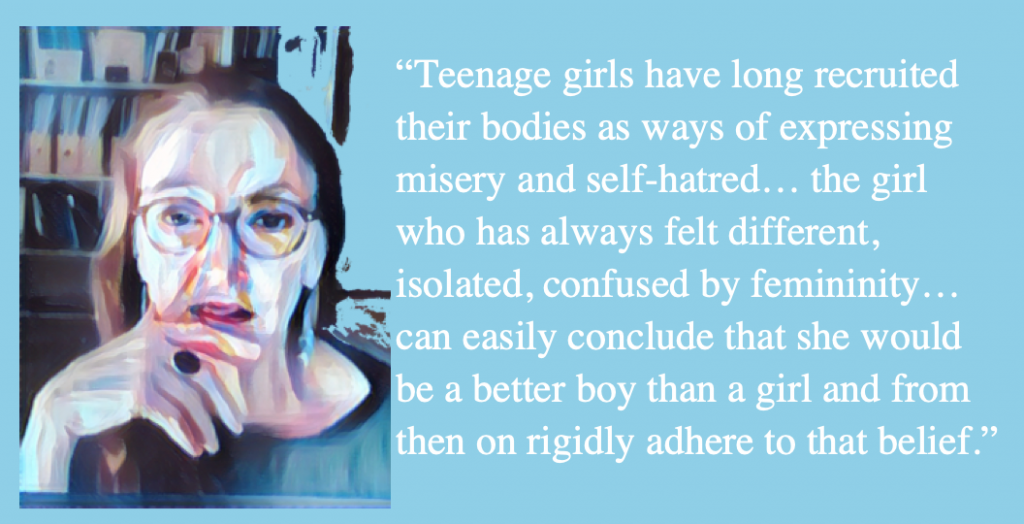
“The disavowal of binary sex has done nothing to destabilise masculinity,” observes Heather.
The two different approaches to gender dysphoria can be described as such: gender critical psychologists hope to explore the girl’s wish to be a boy, whereas ‘postmodern’ psychologists see their role as affiirming the girl in being a boy. In 2018 David Bell wrote a report raising the concerns of Anonymous Clinicians that the co-existence of other ‘complex problems’ in many of the young people presenting to GIDS were not being addressed.
The report stated, “it is simply not possible for a child or adolescent to conceptualise a loss of fertility or sexual pleasure before they have developed their adult body.”
Brunskell-Evans writes of how GIDS threatened herself and fellow editor Michele Moore with possible legal action over their book, a collection of criticisms of the affirmative approach, Inventing Transgender Children and Young People, suggesting that it was ‘defamatory’ and reached ‘inappropriate conclusions. The book was eventually published without issue.
GIDS refer to girls as ‘trans youth’, claim the increase is ‘the consequence of reduced social stigma’ and, somewhat darkly, in the words of clinician Polly Carmichael, “increased awareness of the possibilities around treatment for younger adolescents.”
“The GIDS is currently under scrutiny from certain sections of the media which are becoming more confident in challenging its pracitices,” writes Heather, noting widespread concerns about puberty blockers.
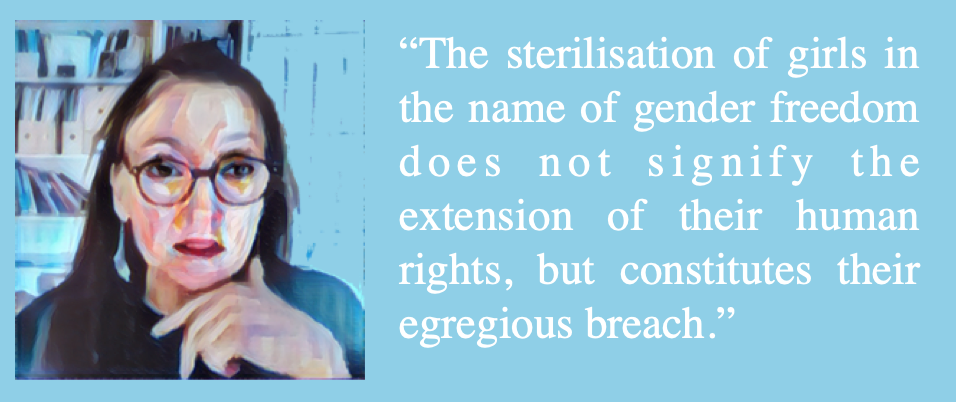

Chapter three deals with ‘queering the law and social policy’, the capture of the Labour Party, the Gender Recognition Act (GRA),and the erosion of single sex spaces, with especial focus on men in women’s prisons, most notably the now infamous case of Karen White.
Prior to 2004, men had to have undergone genital surgery to be legally recognised as women. The 2004 GRA allowed trans-identified people over 18 to get a GRC, without genital surgery. They have to show they’ve got a medical diagnosis of gender dysphoria, have been living for two years in their ‘acquired gender’ , and that they intend to live in that gender for the rest of their life. Trans campaigner Stephen Whittle noted the GRA ‘makes gender into sex in law…even if one is a woman with a penis or a man with a vagina.’
In 2015, Maria Miller’s select committee for Women and Equalities carried out an inquiry into trans inequality. Stonewall, Gendered Intelligence and Mermaids were interviewed and Whittle was a specialist advisor. Women’s groups were not consulted. Brunskell-Evans discusses the 2018 consultation and observes that “women, who make up more than 50% of the population, had no representation in redefining the category to which they belong.”
Female politicians seemed to have no issue with this. On the contrary, in 2017 Theresa May attended the Pink News Awards. In 2018 Penny Mordaunt gave a speech calling trans-identified men (my phrase) “the most marginalised of women”. Heather herself was ousted from the Women’s Equality Party. Later that year, Dawn Butler announced ‘transwomen are women’ and in 2019 Nicola Sturgeon announced that she saw transgender ‘rights’ as no threat to her ‘as a woman’ or a feminist. Lisa Nandy, when asked if a rapist should be put in a women’s prison, replied that trans prisoners should be put in the prison of their choosing.
“From prisons to youth hostels to colleges to changing rooms to swimming pools to shared train sleeper carriages to hospital wards, self identification has become the de facto criterion of entry… all political parties and political leaders supported the rollout of these societal changes,” observes Heather.
This approach effectively gave men access to women’s spaces on demand and seems to be tolerated by the media, religious bodies and human rights organisations. Women’s Place UK was established to help women’s voices be heard on these matters: transactivists describe it as a transphobic hate group, and attempts have frequently been made to shut down WPUK meetings, which, like many other women’s meetings, are now often held in secret.
There are reasons that prisons have traditionally been segregated by sex. Brunskell-Evans shares some important statistics: in England and Wales, there are 21 male prisoners for every female, 36% of women in prison report having being sexually abused as children (compared to 6% of men) and 98.5% of sex offenders in prison are male.
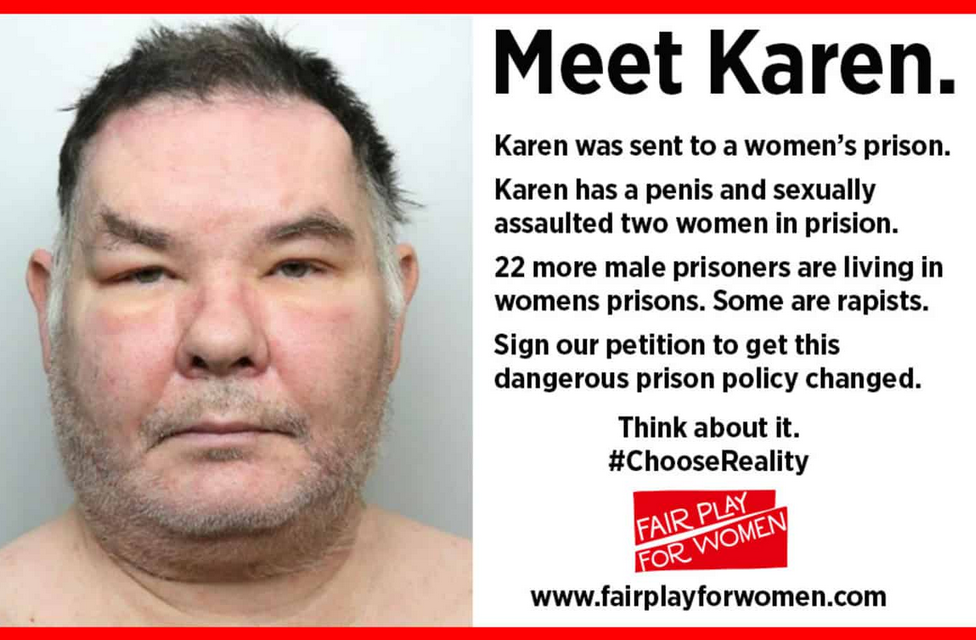 In 2016 the Ministry of Justice claiming it would be harmful for trans prisoners not to be put in the prison of their affirmed gender, claiming this was ‘the most humane and safest way to act’. No female prisoners were consulted and no organisations advocating for women were involved in the review. The result was that male prisoners with penises were allowed to live freely alongside female inmates. Karen White was one such man, convicted of three rapes, a wounding and burglary, he was sent to a women’s prison where he assaulted two female prisoners.
In 2016 the Ministry of Justice claiming it would be harmful for trans prisoners not to be put in the prison of their affirmed gender, claiming this was ‘the most humane and safest way to act’. No female prisoners were consulted and no organisations advocating for women were involved in the review. The result was that male prisoners with penises were allowed to live freely alongside female inmates. Karen White was one such man, convicted of three rapes, a wounding and burglary, he was sent to a women’s prison where he assaulted two female prisoners.
One in fifty male prisoners now identifies as transgender.
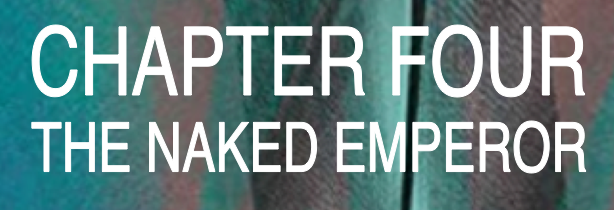

In her final chapter, Heather deals with ideas of diversity and exclusion, ‘the transgender empire’, the ‘gender industrial complex’ and ‘big business dressed in civil rights clothes’.
Women have fought hard for their sex based rights and biological sex is still extremely relevant to women’s experience of discrimination, but trans policy capture is erasing this. Alice Sullivan points out that when critical voices cannot be heard, ‘a false consensus emerges’. If we can’t gather data on sex, we can’t gather data on the effects of sexism and misogyny. This approach will also inevitably affect crime statistics.
I know I’ve noticed that there are more and more sexual offences and violent crimes being ascribed to women in the media: more often than not a closer look or a quick Google will confirm that these are not actually female crimes at all. The May 2020 video ‘These are Not Our Crimes‘ chronicles some of these.
Brunskell-Evans discusses how the Stonewall Diversity Champions scheme embeds Stonewall’s values into the workplace and the education system. Stonewall, we are reminded, has redefined same-sex attraction into same gender attraction. Criminal defence barrister Alison Bailey, founder member of the LGB Alliance, argues that this is an especially egregious betrayal of LGB people, especially women. Stephanie Davies-Arai, director of Transgender Trend, expresses concerns about Stonewall guidance for schools.
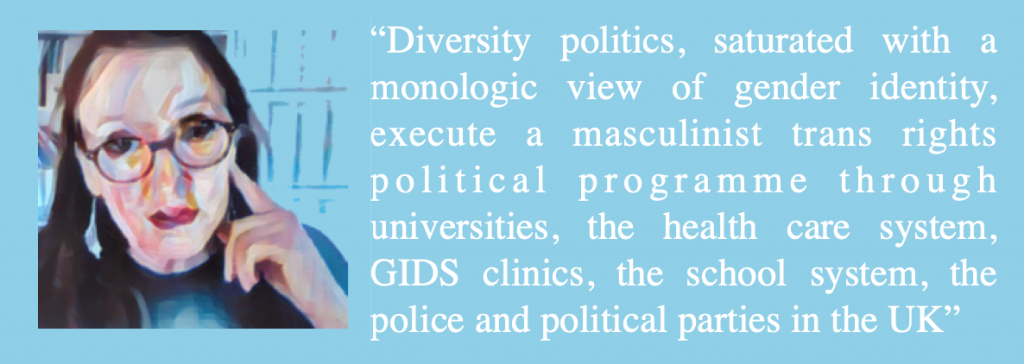
Heather discusses Dan Fisher’s term ‘The Butlerian Jihad’ which declares ‘critics of queer’ to be enemies of human rights, and observes that it is women who are at the forefront of these accusations. She speaks of her personal experience of being forced down the stairs and called a Nazi by a masked ‘sister’ (aka man) whilst attempting to gain access to a meeting, and gives examples of individuals who have been intimidated and silenced by those who support the doctrine of gender identity, which she calls ‘an unprecedented threat to academic freedom’.
Three American billionaires have bankrolled the transgender movement, including the Transgender Day of Remembrance. Whilst eight trans people have been murdered in the UK in the last decade, “more than a hundred women are murdered each year at the hands of males, but no day has been set aside to commemorate their deaths.”
Listing the huge sums of money made available to lobby organisations from the government and other statutory bodies, Heather observes that this ‘effectively normalises transgenderism as a lifestyle choice‘. Even the Crown Prosecution Service in the UK is a Stonewall Diversity Champion which ‘creates a real risk’ that expressing gender critical opinions could leave dissenters open to being investigated for hate crime.
Over the last five years, she concludes, women have worked tirelessly to inform the public about the dangers of potential GRA reforms. Now she holds out hope that Liz Truss, the government’s Minister for Women and Equalities, may take these concerns seriously.
“Dare we hope,” she asks, “that the men’s rights movement is now finally in retreat?”
There is a final tale in the Epilogue, about Heather’s trip to the inaugural event of the Detransition Advocacy Network, which I will leave you to discover for yourself.
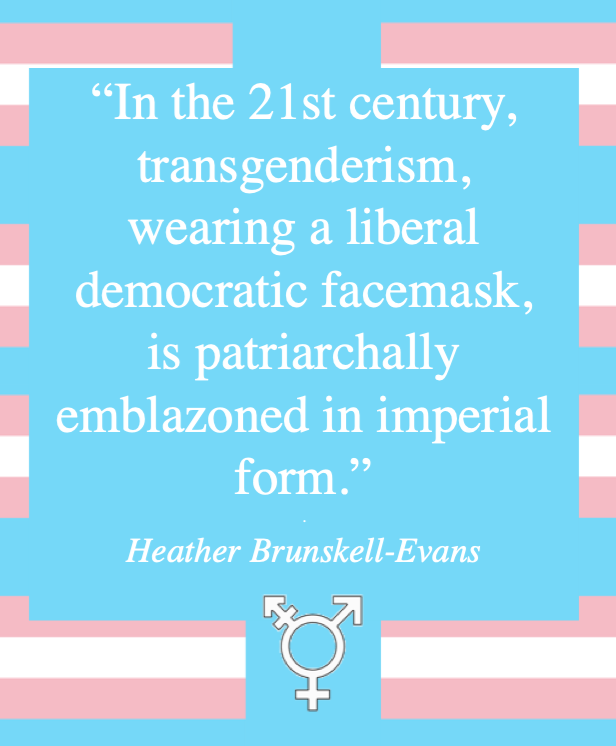 In ‘Transgender Body Politics’, Brunskell-Evans has created for the reader a thickly woven tapestry of fact and philosophy; history and ideology.
In ‘Transgender Body Politics’, Brunskell-Evans has created for the reader a thickly woven tapestry of fact and philosophy; history and ideology.
“The way to defeat bad ideas,” she suggests, “is by exposure, argument and persuasion.”
This book does all three. As a document for and about these times, it will no doubt become a feminist classic. I encourage you to buy a copy.
Those in the UK can purchase it here. It is also available from WHS and Waterstones.
Those in Australia & New Zealand can order it from Spinifex Press, here.

Lily Maynard, you are an important voice in combating this evil disease called gender identity! Please never stop “telling it like it is” ! I live in the US and I am increasingly horrified by the toxic spread of gender identity. The Republican Party is mostly against it – but they are still caught up in the cult of Trump. The Democratic politicians are mostly for it – although I generally agree with them, I cannot vote for any party that denies biological reality. As a voter I feel despair. The world is more upside-down and twisted that I could ever have imagined.